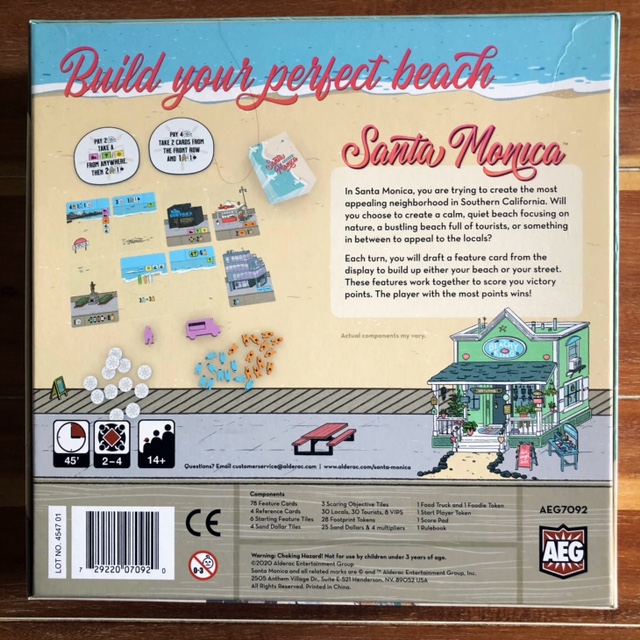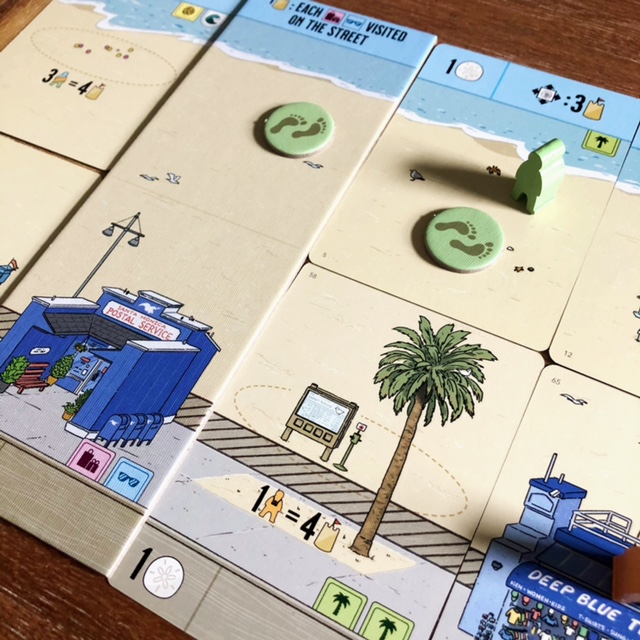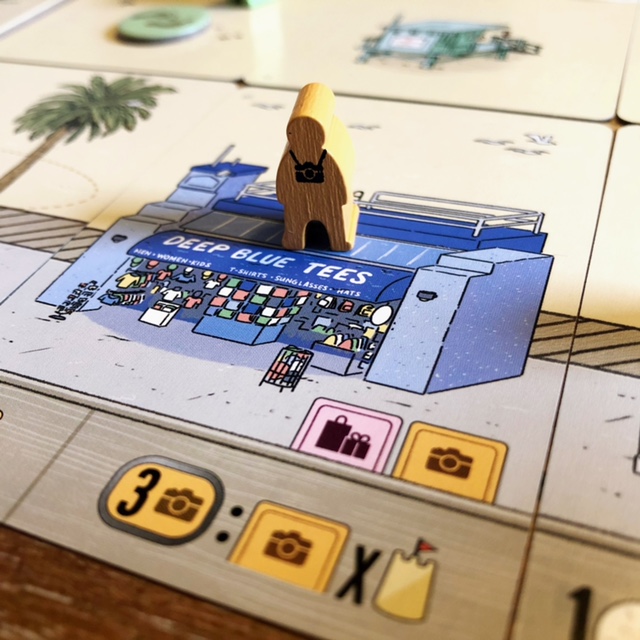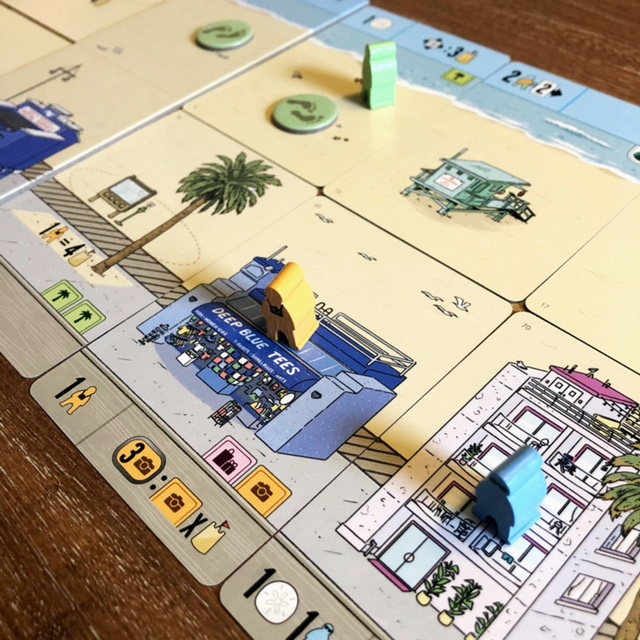A shout-out to the awesome Andrew and Anitra over at The Family Gamers podcast, who sent us a copy of this game. Thank you!
Sneak through the dragon’s cave collecting gold…but look out! If the dragon guesses your next move, you’ll need to go back on the path and risk losing your gold!
Further reading: our family’s review
Dragon’s Cave
Designer: Marco Teubner
Publisher: blue orange
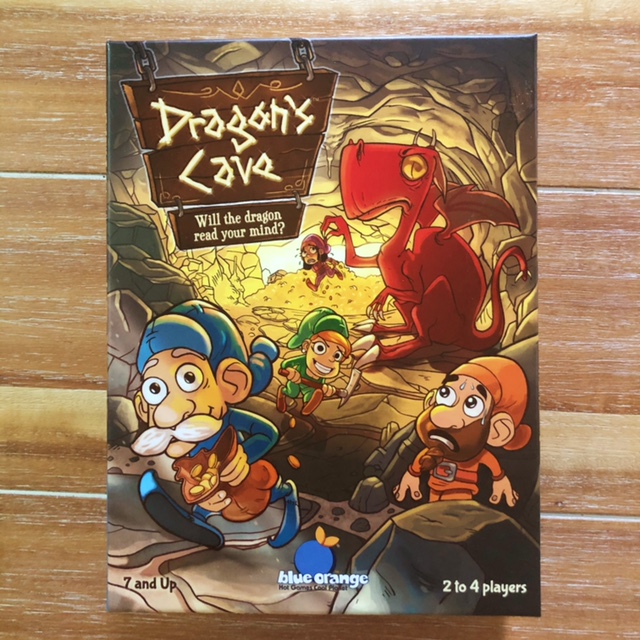
2-4 players
approx 20 minutes
Theme: dragons / treasure
Mechanisms: action retrieval, push your luck
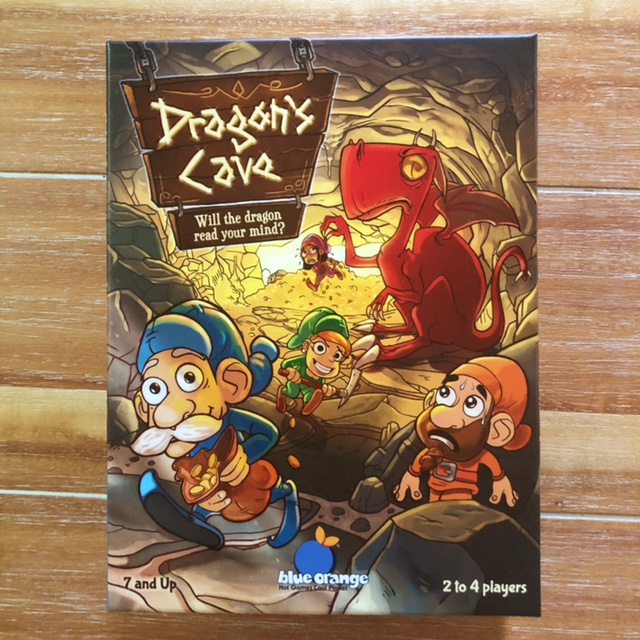


Overview
Players take on the role of brave little dwarves who, lured by the promise of gold, enter the dragon’s cave to explore its riches. The dragon, played by an alternating player each round, tries to guess which colored area the dwarves will advance to, hoping to guess correctly, collect their gold, and send them back on the path.


Components
The components of the game are simple, but well-made and fit perfectly inside the box. The dwarves and dragon are nice chunky wood, and the treasure chests and gold coins are heavy cardboard. The cards are of good quality.
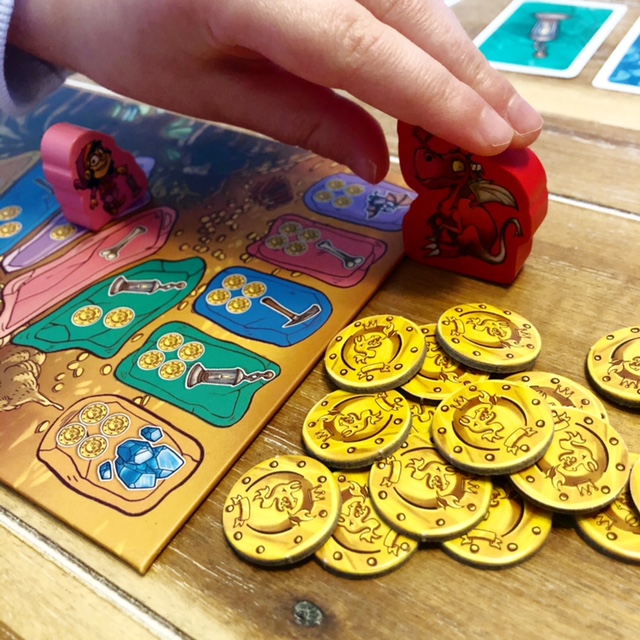
Rule Book
Easy to read – no issues.

How the Game Plays
Each player receives a colored dwarf, a coordinating set of colored cards representing the spaces on the cave’s path, a treasure chest, and a treasure square.
The youngest player will play the first round as the dragon, and then this role will move clockwise around the table. The other players will be dwarves.
Decide which colored area you would like to move your dwarf to, laying the corresponding card face-down on the table. Once all players have selected and laid out their cards, the dragon chooses a colored space at the top of the board.
If the dragon chooses your color: you must take any treasure NOT inside your treasure chest, secretly place it in one hand or divide between both hands, and allow the dragon to choose a hand. You must then move back to the previous square of the same color.
If the dragon does not choose your color: you advance your dwarf and take any gold earned, placing it on your treasure square – NOT in the treasure chest.
Any cards played remain in front of each player until the player “resets” their hand by playing the grey treasure chest card and moving the gold coins from the treasure square to the treasure chest, which protects the coins from the dragon. The cards then go back into the player’s hand.
Play continues, rotating roles, until a dwarf reaches the end of the path and takes the bonus coins. Count up all coins in your treasure chest and on your treasure square – the player with the most coins wins.

Who Should Play?
This is a fun children’s/family game that could play well with children as young as 4-5 years old. It’s relatively quick and has silly moments, sure to make for lots of laughs. Children could become frustrated if the dragon keeps guessing the color they choose, preventing them from advancing through the cave.




